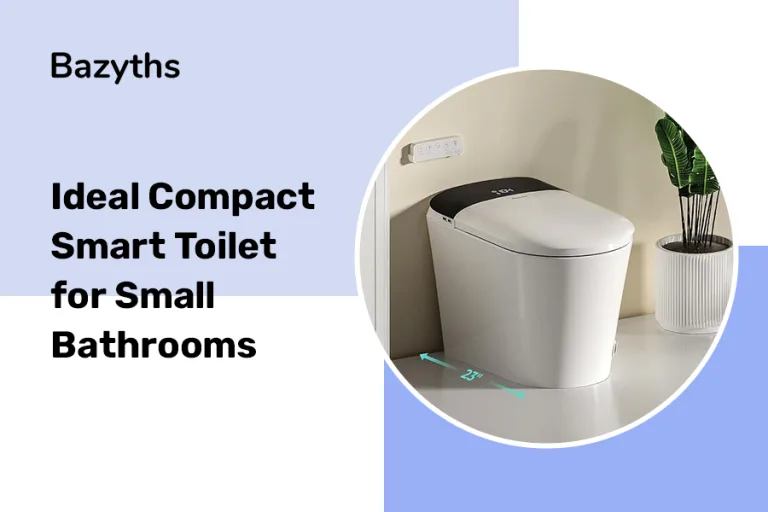The Role of Bathroom Scales and Body Composition Analyzers in Achieving Long‑Term Wellness Goals
Achieving long-term wellness goals is more than just watching the number on a scale drop. True health encompasses a balanced approach that includes body composition, physical fitness, mental well-being, and nutritional habits. While bathroom scales have traditionally been used to track weight, modern body composition analyzers have elevated personal health tracking by offering deeper insights into what your body is truly made of.
In this article, we’ll explore the significance of bathroom scales and body composition analyzers, their differences, how to use them effectively, and why integrating them into your wellness routine is essential for sustained results.
Understanding the Basics
What Are Bathroom Scales?
Bathroom scales are devices designed to measure body weight. They have been a staple in homes and health facilities for decades, helping users track weight gain or loss over time. While traditional analog scales are still in use, digital bathroom scales are now more common due to their accuracy and added features.
What Are Body Composition Analyzers?
Body composition analyzers are advanced devices that go beyond basic weight measurement. They provide detailed insights into various components of the body such as:
- Body fat percentage
- Muscle mass
- Bone density
- Water content
- Visceral fat
- Basal metabolic rate (BMR)
This data is gathered through technologies like bioelectrical impedance analysis (BIA), giving a more comprehensive view of one’s health.
The Limitations of Traditional Weight Tracking
While monitoring weight is a good starting point, relying solely on bathroom scales can be misleading. For example, two individuals may weigh the same but have vastly different body compositions. One might have higher muscle mass, while the other has higher fat content. Thus, without knowing what the weight is composed of, it’s difficult to assess progress accurately.
Why Weight Alone Doesn’t Tell the Full Story
- Muscle vs. Fat: Muscle is denser than fat. A person can look leaner and be healthier at a higher weight if they have more muscle mass.
- Water Retention: Temporary fluctuations in weight due to water retention can give false impressions of progress or regression.
- No Insight into Health Risks: Simply knowing your weight doesn’t help identify risks such as visceral fat or metabolic issues.
How Body Composition Analyzers Enhance Wellness Tracking
Body composition analyzers address these limitations by delivering a full health report rather than a single number. This makes them invaluable tools for those serious about reaching long-term wellness goals.
Key Features of Body Composition Analyzers
- Fat Percentage Tracking: Helps users monitor fat loss rather than just weight loss.
- Muscle Mass Measurement: Vital for athletes, fitness enthusiasts, or anyone engaging in strength training.
- Metabolic Age and BMR: Indicates how many calories your body burns at rest and how your metabolic health compares to your chronological age.
- Water Percentage: Essential for evaluating hydration levels.
- Segmental Analysis: Some models offer limb-by-limb analysis, ideal for tracking muscle symmetry and localized fat.
Personalized Health Goals
By providing tailored feedback, body composition analyzers empower users to set specific goals—such as reducing visceral fat or increasing lean muscle—leading to more effective health strategies.
Integration into Daily Life
Making the Most of Bathroom Scales
To make bathroom scales a part of your wellness journey:
- Weigh yourself at the same time each day (preferably in the morning).
- Use a flat, hard surface for accuracy.
- Track trends over weeks, not day-to-day fluctuations.
Best Practices for Body Composition Monitoring
- Use body composition analyzers weekly, not daily, to account for normal fluctuations.
- Avoid measuring after workouts, eating, or drinking large quantities.
- Ensure consistent conditions (e.g., time of day, hydration level) for accurate comparison.
Setting Realistic and Sustainable Goals
Instead of chasing rapid weight loss, focus on:
- Reducing body fat percentage
- Maintaining or increasing muscle mass
- Improving metabolic indicators like BMR
- Achieving balance in hydration and nutrient intake
With consistent use, these tools encourage a shift from quick fixes to sustainable lifestyle changes.
Benefits for Various Wellness Goals
1. Weight Management
Bathroom scales are excellent for broad tracking of weight changes. Paired with a body composition analyzer, you can assess if the lost weight was fat, muscle, or water—making it easier to fine-tune your approach.
2. Fitness and Muscle Building
For those focused on building muscle, the scale might not move much. However, body composition analyzers can confirm muscle gain and fat reduction, keeping motivation high and progress visible.
3. Medical and Health Monitoring
Many health conditions such as obesity, diabetes, or cardiovascular issues are linked to body composition. Tracking fat, especially visceral fat, can be critical for early intervention and better long-term health.
4. Athletic Performance
Professional and amateur athletes benefit from tracking muscle-to-fat ratios, hydration, and recovery progress, helping to optimize training and avoid overtraining or injury.
Smart Technology and App Integration
Modern scales and analyzers often sync with smartphone apps to track data over time. Features include:
- Goal setting
- Progress charts
- Nutrition recommendations
- Fitness tips
- Cloud backup for data history
Brands like Withings, Tanita, Renpho, and Fitbit offer Bluetooth or Wi-Fi-enabled devices, making it easier to stay informed and committed.
Choosing the Right Device
Factors to Consider
- Accuracy: Look for FDA-cleared or clinically validated devices.
- Connectivity: App integration can greatly enhance tracking.
- User Profiles: Some devices allow multiple users, ideal for families.
- Budget: Body composition analyzers are more expensive than basic bathroom scales but offer much more value for those focused on serious wellness.
Common Myths Debunked
“If I’m losing weight, I’m getting healthier”
Not always. You could be losing water or muscle instead of fat, which may hurt your metabolism.
“All body fat is bad”
Not true. Essential fat is necessary for hormone regulation and organ protection. The goal is to reduce excess fat, especially visceral fat.
“Body composition analyzers are only for athletes”
Anyone can benefit—whether you’re trying to get fit, maintain health, or manage a medical condition.
Both bathroom scales and body composition analyzers play important roles in achieving and maintaining long-term wellness goals. While the scale gives you a snapshot, body composition analyzers provide a detailed report of your internal health. By combining the simplicity of daily weigh-ins with the in-depth analysis of body composition, individuals can take a smarter, more informed approach to their health journey.
Whether you’re just beginning or fine-tuning your wellness strategy, these tools can keep you accountable, motivated, and on track—not just for short-term results, but for a lifetime of well-being.






